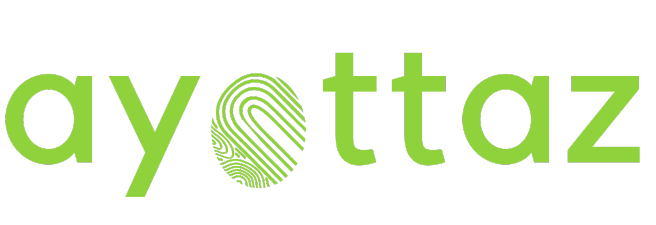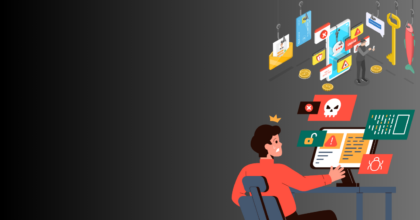7 steps to minimize risk of ransomware attack
As per Ransomware Spotlight Year End 2021 Report, ransomware groups are continuing to target unpatched vulnerabilities and weaponize zero-day vulnerabilities in record time to instigate crippling attacks. At the same time, threat actors are broadening their attack spheres and finding newer ways to compromise organizational networks and fearlessly trigger high-impact assaults.
According to Coveware, the average ransom payment increased 43% to $220,298 from $154,108 in Q4 of 2020. The median payment in Q1 also increased to $78,398 from $49,450, a 58% increase. Averages and median were pulled higher by a small number of threat actor groups, most specifically CloP, that were extremely active during Q1 and impacted large victims with very high ransom demands.
Thus, the bottom line is that there is no escape from ransomware attacks and preparedness is the only solution.
Best practices for ransomware protection.
Asset Visibility
What you can’t find, you can’t manage or protect. Invest in an automated platform that gives your IT and security teams improved access across all connected devices and applications, as well as information on how those assets are being utilised. A thorough discovery project locates all assets on a network, including corporate-owned and BYOD devices, and then offers information on who is using what device, how and when they use it, and what they have access to. This allows security teams to better protect assets and strengthen overall security posture.
Modernize Device Management
In remote and hybrid work contexts, modern device management is a critical component of boosting security. Bring-your-own-device (BYOD) programs are fully supported by unified endpoint management (UEM) solution, which maximizes user privacy while still securing corporate data.
Ability to easily onboard and configure device and application settings at scale, establish device hygiene with risk-based patch management and mobile threat protection, monitor device posture and ensure compliance, identify and remediate issues quickly and remotely, automate software updates and OS deployments, and more are all common features of UEM architectures. Use a UEM solution that can handle a wide range of operating systems and is available on-premises as well as SaaS.
Maintain Device Hygiene
The majority of people equate device cleanliness with patch management, but it encompasses much more. Device hygiene is a proactive, multi-layered method of ensuring that only devices that fulfil stated security standards are allowed to access company ’s resources, limiting the digital attack surface. Device vulnerabilities (jailbroken devices, vulnerable OS versions, etc.), network vulnerabilities (man-in-the-middle attacks, malicious hotspots, unsecured Wi-Fi, etc.) and application vulnerabilities (man-in-the-middle attacks, malicious hotspots, unprotected Wi-Fi, etc.) should all be addressed (high security risk assessment, high privacy risk assessment, suspicious app behavior, etc.). Developing processes that are well-defined and repeatable so that they can eventually be automated is also part of establishing effective device hygiene.
Go Password less
The only individuals who apparently love passwords are the threat actors who use them as a weapon. Credentials, such as passwords, continue to be among the most sought-after data categories in breaches, accounting for 61% of all breaches. Furthermore, single sign-on (SSO) systems can introduce a single point of failure that hackers can use to obtain access to most or all company programmes.
Passwordless authentication with zero sign-on is the best option. Instead of passwords, this strategy employs multifactor authentication using alternative authentication mechanisms such as using a mobile device (‘Possessions’), biometrics such as fingerprints, Face ID, and so on(‘Inherence’), or location, time of day, etc.(‘Context’).
Facilitate Secure access
The network perimeters that were effective while your staff was in the office are no longer adequate in the Everywhere Workplace. Today’s networks should be based on the software-defined perimeter concepts (SDP). It is intended to use tried-and-true, standards-based components to ensure that SDP can be connected with your existing security systems. To get the full benefits of SDP, an additional layer of security is required, which is where zero-trust network access (ZTNA) comes into play.
SDPs may incorporate VPNs into their architecture to create secure network connections between user devices and the servers they need to access. However, SDPs are very different from VPNs. In some ways, they are more secure: while VPNs enable all connected users to access the entire network, SDPs do not share network connections. SDPs may also be easier to manage than VPNs, especially if internal users need multiple levels of access.
Be Proactive not Reactive
The majority of security posture evaluations are done following an attack and are tailored to the attack vector. This reactive attitude, combined with too many vacant seats in IT jobs, is a major issue. To remain compliant and reduce dangers, it is critical to master government, risk, and compliance (GRC) management. Look for a system that allows for rapid and easy regulatory paperwork imports in order to connect citations to security and compliance controls, and strive to replace manual processes with automated repetitive-governance activities. Infact aligning your business with standards like SOC2 and ISO 27001 is half the battle won.
Implement a good threat detection and response architecture
Today’s threat landscape is defined by increased threat sophistication, an increase in the volume of assaults, increasing IT complexity, organisational de-perimeterization, and talent and resource restrictions. IT complexity is defined by changing infrastructure, including multi-cloud, hybrid cloud, Internet of Things (IoT), operational technology (OT), and vanishing perimeters.
An effective security programme requires people, processes, and technology to meet these issues. A solid security program’s cornerstone is threat management, which must include visibility, detection, investigation, and response capabilities, as well as containment, orchestration automation, and remediation capabilities.
While establishing a good overall security posture can seem overwhelming, it is essential to invest in it to prevent risks and exposures for your business and to comply with client requirements.
With Ayottaz, you can achieve comprehensive cybersecurity capabilities and effective threat management solutions in a hassle-free and convenient manner. Connect with us now.


